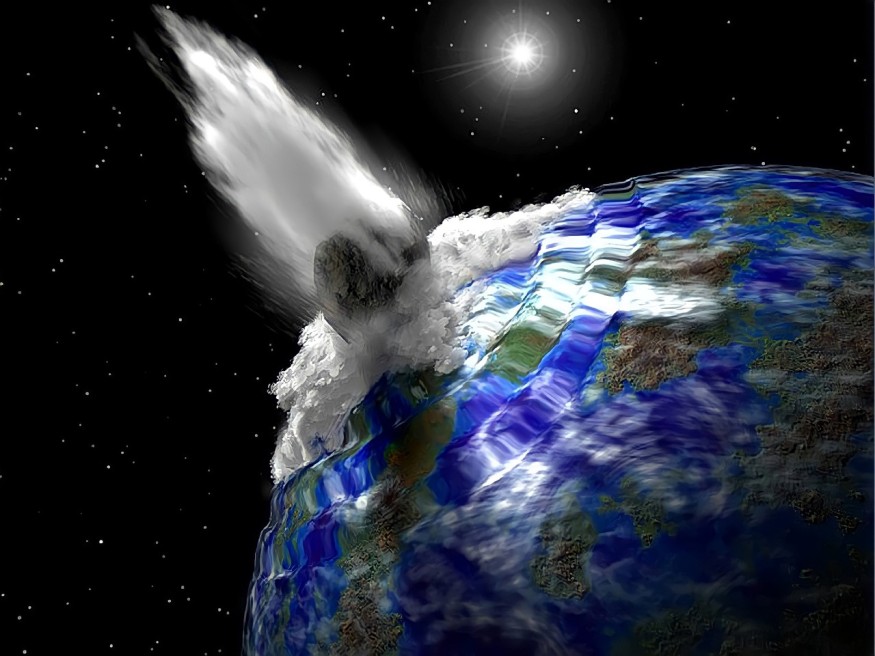NASA's asteroid tracker has spotted a giant asteroid called asteroid 2018 AH heading towards Earth. It is as big as the Washington Monument, measuring around 190 meters, and will likely pass by Earth on December 27. Scientists said it was comparable to the asteroid that exploded on the Podkamennaya Tunguska River in Siberia, Russia, more than 100 years ago on June 30, 1908. Its impact is said to be greater than the destruction caused by an atomic bomb.

Will Asteroid 2018 AH Hit Earth in December?
According to an article in the Jerusalem Post, asteroid 2018 AH is heading to Eart but unlikely to hit the planet. However, it will pass by Earth at a distance of 2.7 million miles (4.5 million kilometers) away. That is approximately 11 lunar distances (LD), wherein the distance between the Moon and Earth is 238,000 miles (384,000 kilometers).
But this is not the first time that the asteroid has come close to the planet. The Iceland news outlet Watchers reported in 2018 that asteroid 2018 AH, which was newly discovered that year, flew past Earth and was at a distance of 0.77 LD or approximately 184,000 miles (297,000 kilometers).
It was closer to Earth than the Moon at that time and had gone unnoticed because it was so dim that scientists did not see it coming. They only noticed the asteroid two days after its close approach to Earth.
Asteroid 2018 AH belongs to the most common group of asteroids, the Apollo group of asteroids. It is also the largest object to fly-by near the Earth within 1 LD since 2011. More so, the asteroid is the 9th largest known near-Earth object to fly by Earth in history aside from two other asteroids larger than asteroid 2018 AH that passed close by the planet in 1918.
Since asteroid 2018 AH, no asteroid of such size has come close to Earth. However, a massive, nearly kilometer-long asteroid, 2001 WNS, is expected to cross nearby on June 26, 2028. But like 2018 AH, this too will not hit Earth and will only pass by at a safe distance of 154,000 (249,000).
Asteroid 2018 Could Cause Massive Destruction Greater Than an Atomic Bomb
The astronomers predicted that asteroid 2018 AH's impact would be greater than an atomic bomb, according to Jerusalem Post. They said that a similar thing happened before when a 17-meter asteroid exploded in the atmosphere just above Russia in 2013. But asteroid 2018 AH's explosion will probably be like the Tunguska event.
The asteroid that hit Tunguska in 1908 was almost similar to 2018 AH or smaller when it produced a massive 12 megaton explosion in the air several kilometers above the area.
Due to how remote and sparsely populated the region was, only three people living around the area were thought to have been killed by the explosion. However, it left damage to around 80 million trees that were completely flattened and a loud noise was heard when it happened. Witnesses claim that tremors and airwaves were felt as far away as Washington, D.C., and Indonesia.
Furthermore, an eyewitness who lived 18 miles (30 kilometers) away from the site said that the Tunguska asteroid seemed to have caused the sky to split in two before a fight appeared high and wide over the forest. He talked about intense heat to the point that he wanted to tear off his shirt and throw it down, but then the sky closed, and a strong thump sounded.
In the end, the Tunguska asteroid left traces in the ground as if forming pathways, damaged some crops, and shattered the windows of his barn.
RELATED ARTICLE: Most Explosive Meteor Impact: 1908 Tunguska Explosion Caused by Iron Asteroid That Entered Earth Then Bounced Back to Space
Check out more news and information on Asteroid in Science Times.










